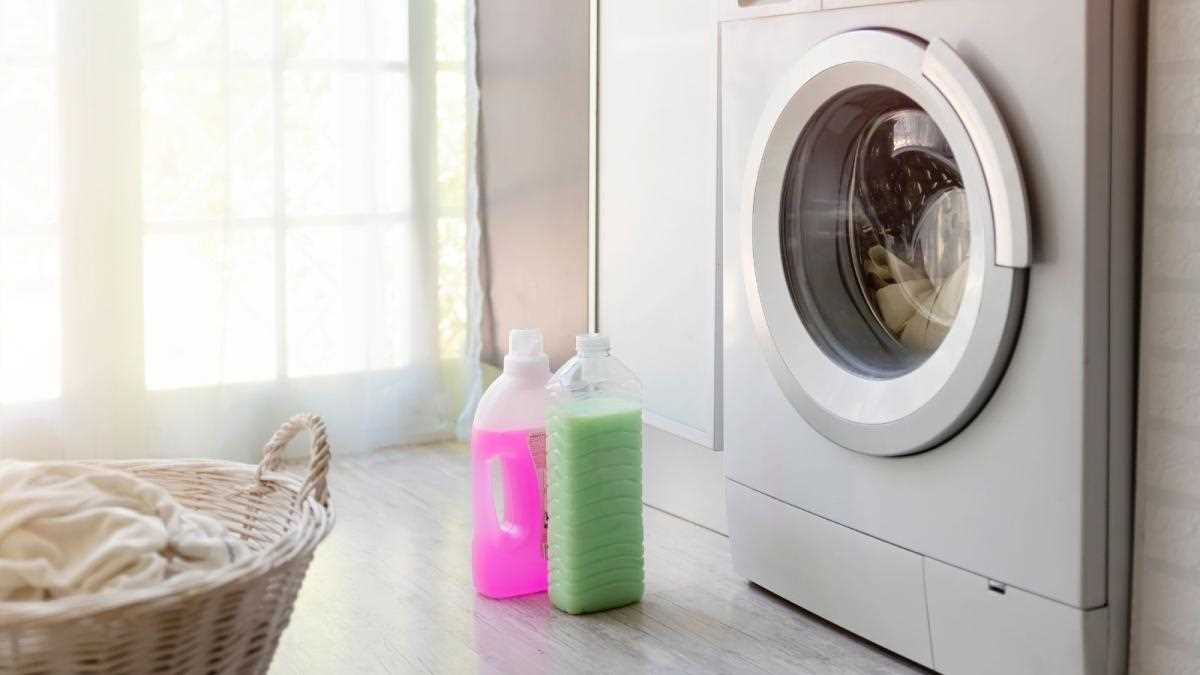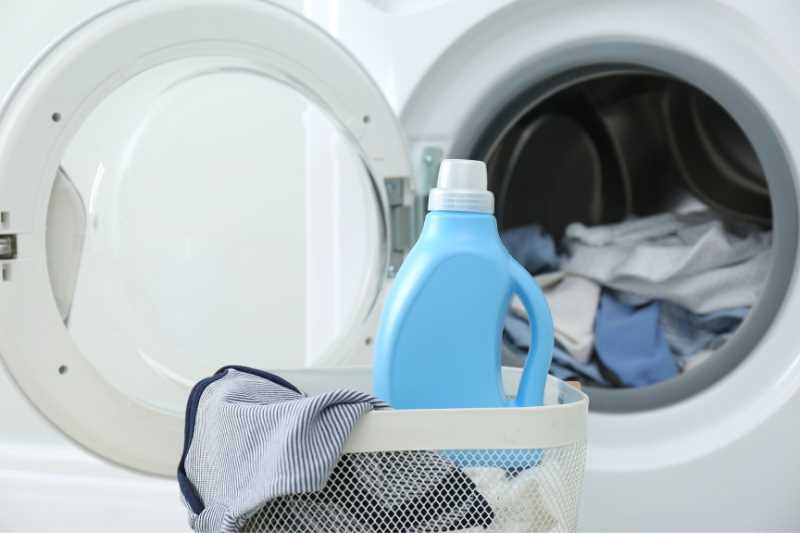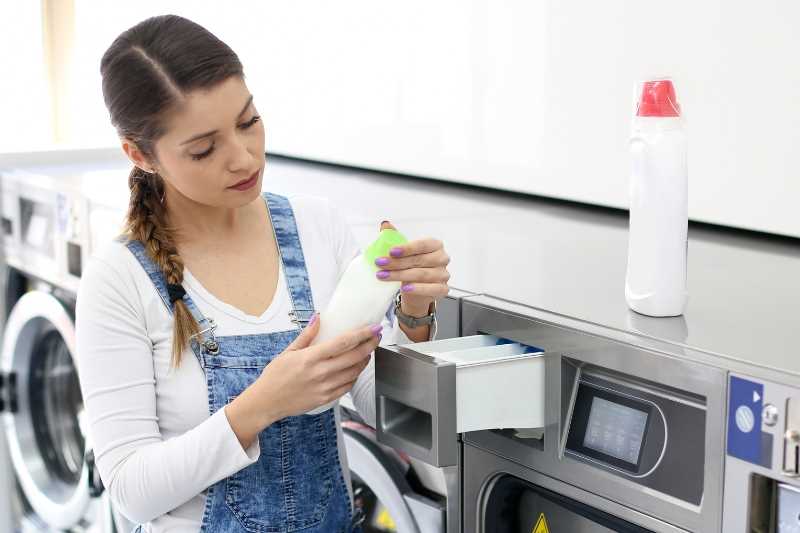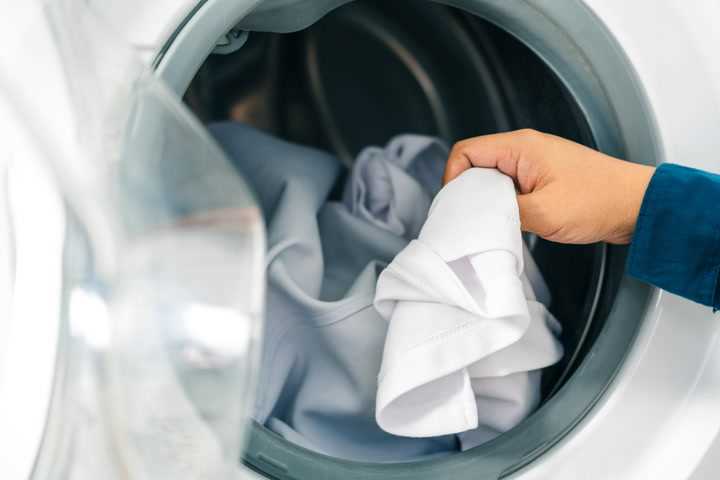




Adding fabric softener to your laundry routine is a common practice that many people believe can help make their clothes softer, reduce static cling, and leave them with a pleasant scent. While fabric softener is typically added during the rinse cycle of the washing machine, some people wonder if it’s safe to add it directly to the drum.
There are differing opinions on this matter, with some people claiming that adding fabric softener directly to the drum can lead to issues such as clogging the machine and affecting its performance. On the other hand, some argue that this method is perfectly safe and can even provide better results.
One potential concern with adding fabric softener directly to the drum is that it may not be distributed evenly throughout the load. During the rinse cycle, fabric softener is typically diluted with water and then dispersed evenly among the clothes. However, when added directly to the drum, there is a risk that some areas of the load may receive more fabric softener than others, resulting in uneven softness or a greasy residue.
Another factor to consider is the type of washing machine you have. Some machines, particularly front-loading ones, may have specific compartments designed for fabric softener, making it easier and more efficient to add it during the rinse cycle. On the other hand, top-loading machines may not have dedicated compartments, which can make it more tempting to add fabric softener directly to the drum.
Why Add Fabric Softener?
Fabric softener is a laundry product designed to add a pleasant scent, reduce static cling, and make clothes feel softer and more comfortable. It is typically used in conjunction with laundry detergent to enhance the overall washing experience.
Here are some reasons why people choose to add fabric softener:
- Softness: Fabric softener helps to make clothes feel softer and more comfortable against the skin. This is especially beneficial for garments made from rough or synthetic materials that can be stiff and uncomfortable without proper conditioning.
- Scent: Fabric softener adds a pleasant fragrance to freshly washed clothes, leaving them smelling fresh and clean. The added scent can also help to mask any unpleasant odors that may be present on laundry items.
- Reduced static cling: Fabric softener helps to reduce static electricity build-up in fabrics, which can prevent clothes from sticking together or clinging to the body. This makes garments easier to handle and wear, reducing the frustration of static cling.
- Easier ironing: The use of fabric softener can make clothes easier to iron, as it helps to relax the fibers and reduce wrinkles. This can save time and effort when it comes to ironing clothes, resulting in a smoother and more professional look.
While fabric softener is not essential to the laundry process, many people find it to be a beneficial addition for improving the overall quality and comfort of their clothes. It is important to follow the manufacturer’s instructions on how to use fabric softener, whether adding it directly to the washing machine drum or through the designated dispenser.
Benefits of Using Fabric Softeners
Fabric softeners offer a variety of benefits that can enhance the overall laundry experience. Here are some of the main advantages of using fabric softeners:
1. Softens Fabrics
The primary purpose of fabric softeners is to make fabrics feel softer and smoother to the touch. They work by coating the fibers of the fabric with a thin layer of chemicals that help loosen fibers, reducing stiffness and enhancing the overall softness of the material. This can be particularly beneficial for fabrics that tend to become rough and scratchy after being washed, such as towels and bed sheets.
2. Reduces Static Cling
Fabric softeners also help to reduce static cling, which is a common issue with certain fabrics, especially synthetic materials. The chemicals in fabric softeners neutralize the electric charges that cause static electricity, preventing clothes from sticking together or clinging to the body. This can make clothes more comfortable to wear and eliminate the inconvenience of garments clinging to each other during the drying process.
3. Improves Scent
Fabric softeners come in a wide range of scents and fragrances, which can add a pleasant aroma to your laundry. Whether it’s a floral, fruity, or clean scent, fabric softeners can leave your clothes smelling fresh and inviting. This is especially useful for items that may retain odors, such as gym clothes or pet bedding.
4. Eases Ironing
Using fabric softeners can make ironing easier by reducing wrinkles and creases in the fabric. The smooth and soft texture achieved with fabric softeners can help garments slide more easily over the ironing board, allowing for a smoother and faster ironing process. This can be a time-saving benefit for those who frequently need to iron their clothes.
5. Extends Lifespan of Clothes
By reducing friction between fibers and minimizing wear and tear from repeated washes, fabric softeners can help extend the lifespan of your clothes. Fabrics that are treated with fabric softeners tend to maintain their shape, color, and overall quality for a longer period of time. This can help you get the most out of your favorite garments and potentially save money on replacing worn-out clothes.
- Overall, fabric softeners offer a range of benefits that can enhance the look, feel, and longevity of your clothes.
- By softening fabrics, reducing static cling, improving scent, easing ironing, and extending the lifespan of clothes, fabric softeners provide a well-rounded solution for achieving high-quality laundry results.
- Consider adding fabric softeners to your laundry routine to enjoy the advantages they offer.
Can You Add Fabric Softener to the Washing Machine Drum?

Adding fabric softener to the washing machine drum is a common practice among many people. It offers convenience and ensures the softening agent is evenly distributed throughout the load. However, there are a few considerations to keep in mind before adding fabric softener directly to the drum.
1. Compatibility with your washing machine
Before adding fabric softener to the drum, check if your washing machine is compatible with this practice. Some machines have specific compartments or dispensers designed for fabric softener. Using the wrong method may lead to inefficient use of the softener or damage to your machine.
2. Dilution

If you choose to add fabric softener directly to the washing machine drum, it’s essential to dilute it properly. Fabric softeners are concentrated products and should be diluted with water to avoid staining or damaging the clothes. Follow the instructions on the fabric softener bottle for the correct dilution ratio.
3. Timing
Consider the timing of adding fabric softener to the drum. Typically, fabric softener should be added during the rinse cycle to ensure fabric softening agents have enough time to work. Adding it during the wash cycle may result in reduced effectiveness.
4. Overuse and Residue

Adding fabric softener directly to the drum can lead to overuse if you pour too much. Excess fabric softener may leave a residue on clothes, making them feel greasy or less absorbent. It’s important to measure the correct amount and avoid pouring directly onto the clothes.
5. Alternative options

If you’re uncertain about adding fabric softener directly to the drum, consider using alternative options. These include using fabric softener balls or dryer sheets in the drying cycle. These methods provide similar softening effects without the potential risks associated with adding fabric softener to the drum.
Conclusion
While adding fabric softener to the washing machine drum is a convenient method, it’s crucial to check your machine’s compatibility, dilute properly, consider the timing, and avoid overuse. Exploring alternative options can also provide effective fabric softening. By following these guidelines, you can ensure the safety and desired softening effects of your laundry.
Pros and Cons of Adding Fabric Softener Directly to the Drum
Pros
- Convenience: Adding fabric softener directly to the washing machine drum is convenient as it eliminates the need for a separate fabric softener dispenser or the need to wait for the rinse cycle to add fabric softener.
- Effective: Adding fabric softener directly to the drum can ensure that it is evenly distributed throughout the load of laundry, resulting in softer and more comfortable clothes.
- Reduced odor: Fabric softeners can help eliminate unpleasant odors from clothes, making them fresher and more enjoyable to wear.
- Softens fabrics: Fabric softeners are designed to soften clothes, reducing stiffness and making them feel more comfortable against the skin.
Cons
- Possible staining: Adding fabric softener directly to the drum may increase the risk of staining clothes, especially if the fabric softener is concentrated or not properly diluted.
- Build-up in the machine: Fabric softener residue can accumulate in the washing machine over time, potentially clogging or damaging the machine if not cleaned regularly.
- Environmental impact: Some fabric softeners contain chemicals that can be harmful to the environment. Adding them directly to the drum may result in more of these chemicals being released into the water system.
- Possible skin irritation: Fabric softeners can contain ingredients that may cause skin irritation or allergies in some individuals. Direct contact with concentrated fabric softener may increase the risk of skin reactions.
Before adding fabric softener directly to the washing machine drum, it is important to consider these pros and cons to make an informed decision based on your personal preferences and needs.
Alternative Ways to Use Fabric Softener

While adding fabric softener directly to the washing machine drum is a common practice, there are alternative ways to use fabric softener that can be just as effective. Here are a few methods to consider:
1. Use a Fabric Softener Dispenser

If your washing machine has a fabric softener dispenser, it is designed to release the fabric softener at the right time during the rinse cycle. Simply pour the fabric softener into the dispenser and let the machine do the rest. This method ensures that the fabric softener is evenly distributed and effectively coats your clothes.
2. Dilute the Fabric Softener
Another way to use fabric softener is to dilute it with water before adding it to your laundry. Mix one part fabric softener with three parts water in a container, and then pour the diluted mixture onto a washcloth or sponge. Toss the washcloth or sponge into the dryer with your clothes, and the fabric softener will be released as the clothes dry. This method allows you to control the amount of fabric softener used on each load.
3. Create a Fabric Softener Spray
If you prefer not to use fabric softener in the wash cycle, you can create a fabric softener spray. Mix one part fabric softener with two parts water in a spray bottle, and then lightly mist your clothes before putting them in the dryer. The mist will help reduce static and leave your clothes feeling soft and fresh. This method is especially useful for delicate fabrics that may not be suitable for the full wash cycle.
4. Use Dryer Sheets
If you don’t want to deal with liquid fabric softeners, you can opt for dryer sheets instead. Simply toss a dryer sheet into the dryer with your clothes, and it will release the fabric softening agents as the clothes tumble. Dryer sheets are convenient and can be used with any type of fabric or load size.
5. Try Wool Dryer Balls

For a natural alternative to fabric softeners, wool dryer balls are a great option. These reusable balls work by lifting and separating the clothes in the dryer, reducing drying time and static cling. Additionally, you can add a few drops of essential oil to the dryer balls for added freshness. Wool dryer balls are eco-friendly and can be used for hundreds of loads before needing to be replaced.
Consider trying these alternative methods to use fabric softener and find the one that works best for you. Each method offers its own benefits and allows you to achieve soft, static-free clothes.
FAQ
Is it safe to pour fabric softener directly into the washing machine drum?
Pouring fabric softener directly into the washing machine drum is generally considered safe, as long as you follow the manufacturer’s instructions and guidelines. However, it is always recommended to dilute fabric softener with water before pouring it into the drum to prevent any potential build-up or damage to the machine.
Can pouring fabric softener directly into the washing machine drum damage the machine?
If you pour fabric softener directly into the washing machine drum without diluting it, it can potentially cause build-up and clog the system over time, resulting in the machine not functioning properly. Therefore, it is important to follow the manufacturer’s instructions and guidelines to ensure the safe use of fabric softener in your machine.
What are the potential risks of adding fabric softener directly to the washing machine drum?
Adding fabric softener directly to the washing machine drum without diluting it can lead to a build-up of residue, which can clog and damage the machine over time. This can affect the performance and efficiency of the machine, as well as potentially cause mechanical issues. Therefore, it is recommended to dilute fabric softener with water before adding it to the drum.
Is there a recommended method for adding fabric softener to the washing machine?
Yes, most washing machine manufacturers recommend adding fabric softener during the rinse cycle, either through a designated compartment or using a fabric softener ball or dispenser. This helps to ensure proper distribution and dilution of the fabric softener, preventing any potential damage or build-up in the machine. Always refer to the manufacturer’s instructions for the specific model of your washing machine.
What happens if fabric softener is not diluted before adding it to the washing machine drum?
If fabric softener is not diluted before adding it to the washing machine drum, it can create a concentrated solution that may lead to the build-up of residue. This residue can clog the machine’s components, such as the dispensing compartment or pipes, affecting the machine’s performance and potentially causing damage. It is important to follow the manufacturer’s instructions and dilute fabric softener with water to ensure safe use and optimal functioning of the machine.
Is it safe to add fabric softener directly to the washing machine drum?
Yes, it is generally safe to add fabric softener directly to the washing machine drum. However, it’s important to follow the manufacturer’s instructions and guidelines for your specific washing machine model to ensure safe and effective use of fabric softener. Some machines have dedicated compartments for fabric softener, while others allow you to directly pour it into the drum. Proper usage will help prevent any potential issues or damage to your machine.
Can adding fabric softener directly to the washing machine drum cause any problems?
Adding fabric softener directly to the washing machine drum can potentially cause problems if not used correctly. Using too much fabric softener or pouring it directly on clothes instead of diluting it with water can result in a residue buildup on your clothes, towels, or bedding. Additionally, some washing machine models are not designed to handle fabric softeners directly in the drum and may experience clogs or malfunctions. It is important to carefully read the manufacturer’s instructions and follow the recommended usage guidelines to avoid any potential problems.















